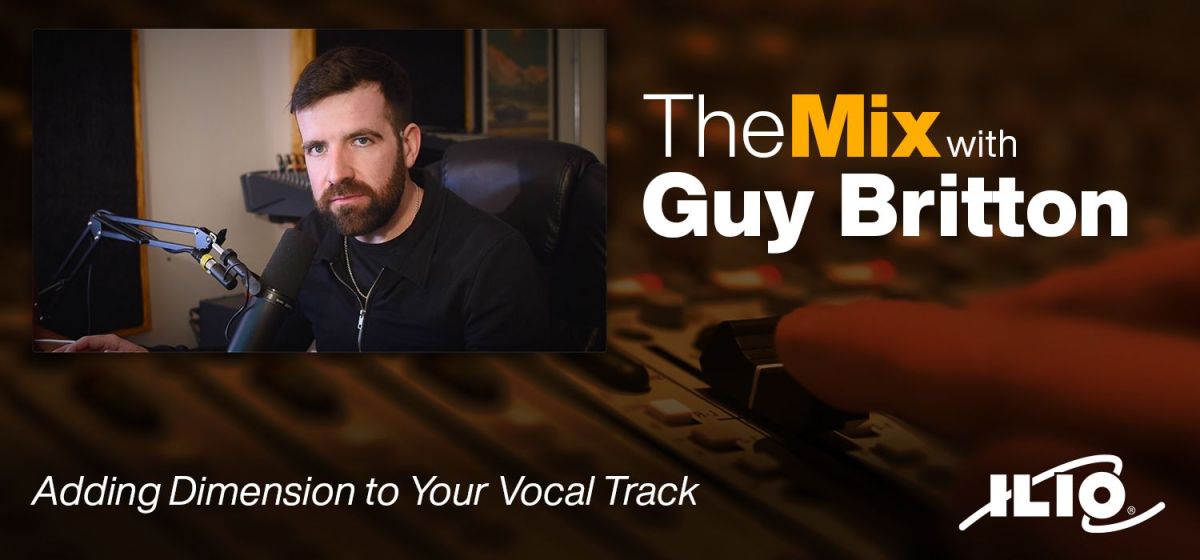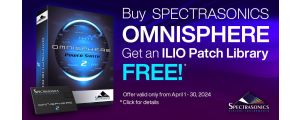FLASH SALE! Get these three Creative Gem plugins for half off, only through March 21.
Adding Dimension to Your Vocal Track
So you’ve spent some time shaping your mix and you’ve found yourself a great-sounding vocal chain, the vocal sounds great on its own, but it doesn’t quite sit right in the track. Maybe you’ve tried a bunch of different reverbs to put the vocal in a virtual space and make it feel bigger, but it still doesn’t quite sound as big or as interesting as the vocals on your favorite records. Sound familiar? Here are a few top tips on how to take a good vocal mix and level it up to a great vocal mix using a few simple techniques.
Width
Aside from a few experimental recordings, I’d wager that more than 99% of vocals in recorded history are recorded in mono using a single microphone. More often than not, a mono vocal with perhaps a stereo reverb and delay is enough to deliver the goods, but sometimes we need a bit more width from our lead vocal without going to the extent of double or triple-tracking it.
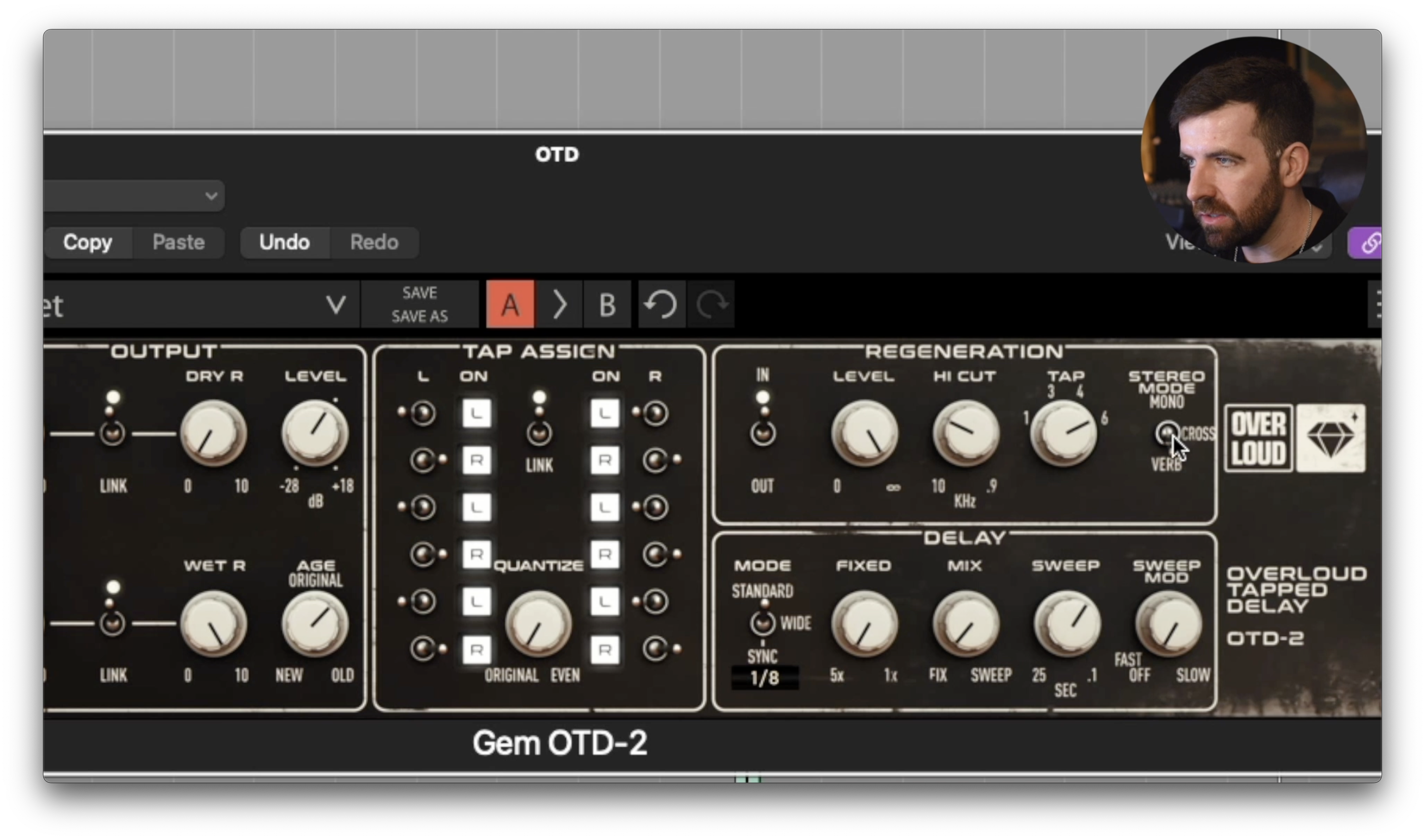
In these scenarios, I like to use a stereo delay with a super short delay time and no feedback. One of my favorite plugins for this particular application is the Gem OTD-2. The OTD has an enormous amount of features to give you all kinds of different delay sounds but there’s something about this plugin that sounds great just doing a simple, short-and-wide slap delay.
Putting the OTD-2 on an aux send and blending to taste can give you everything from the 80’s-esque ‘in a room’ style vocal effect down to a very subtle widening. Most of the time, my personal preference is to blend in just a small amount so it’s felt more than it’s heard - this can work wonders for making the vocal seem bigger and wider without sounding too much like an obvious effect.
Modulation
As I mentioned above, I usually prefer my widening effects to be subtle and I try not to lean into the 80’s style vocal processing too much, but sometimes that sound is exactly what’s needed to give a vocal some character and glue it in the mix. Back in the 1980’s, the Dimension D was a popular FX unit in studios around the world; designed to enhance a mono signal by introducing two slightly time-shifted delay lines along with some subtle pitch drifting, creating an illusion of greater width and depth in a signal.
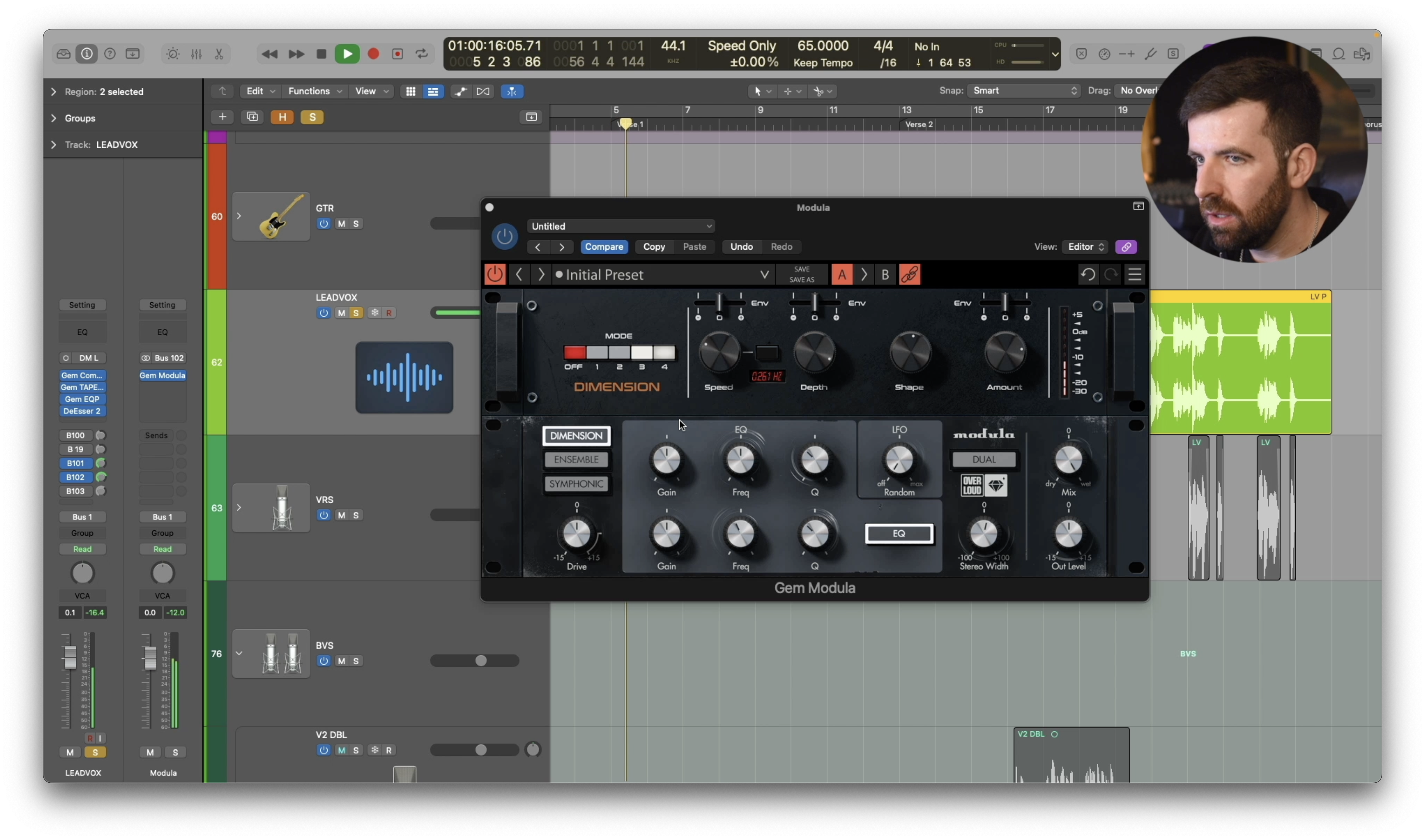
Overloud have produced their own take on this legendary unit in the form of the Gem Modula plugin, featuring four similar ‘dimension’ settings along with a range of controls to help dial in the perfect almost-chorus effect sound.
Using the Gem Modula in parallel on a vocal is a great way of adding even more width and character to a vocal. It has a grittier, darker sound to it than just using a simple stereo delay. Add to this the range of modulation settings that can be dialed into the Gem Modula and we can use it to add some really interesting color to a vocal.
I like to think of it as using the OTD-2 for a cleaner, more defined and obvious width, and then using the Gem Modula to add some character and modulation to the stereo field. And as always, blend to taste.
Slap Delay
By now the vocal mix is hopefully starting to shape up. It’s starting to sound much wider and more interesting but maybe it just feels as though it’s missing the finishing touch to help glue the whole thing together. This is where a slap delay (usually somewhere in the region of 70ms - 130ms, although YMMV) comes in handy.
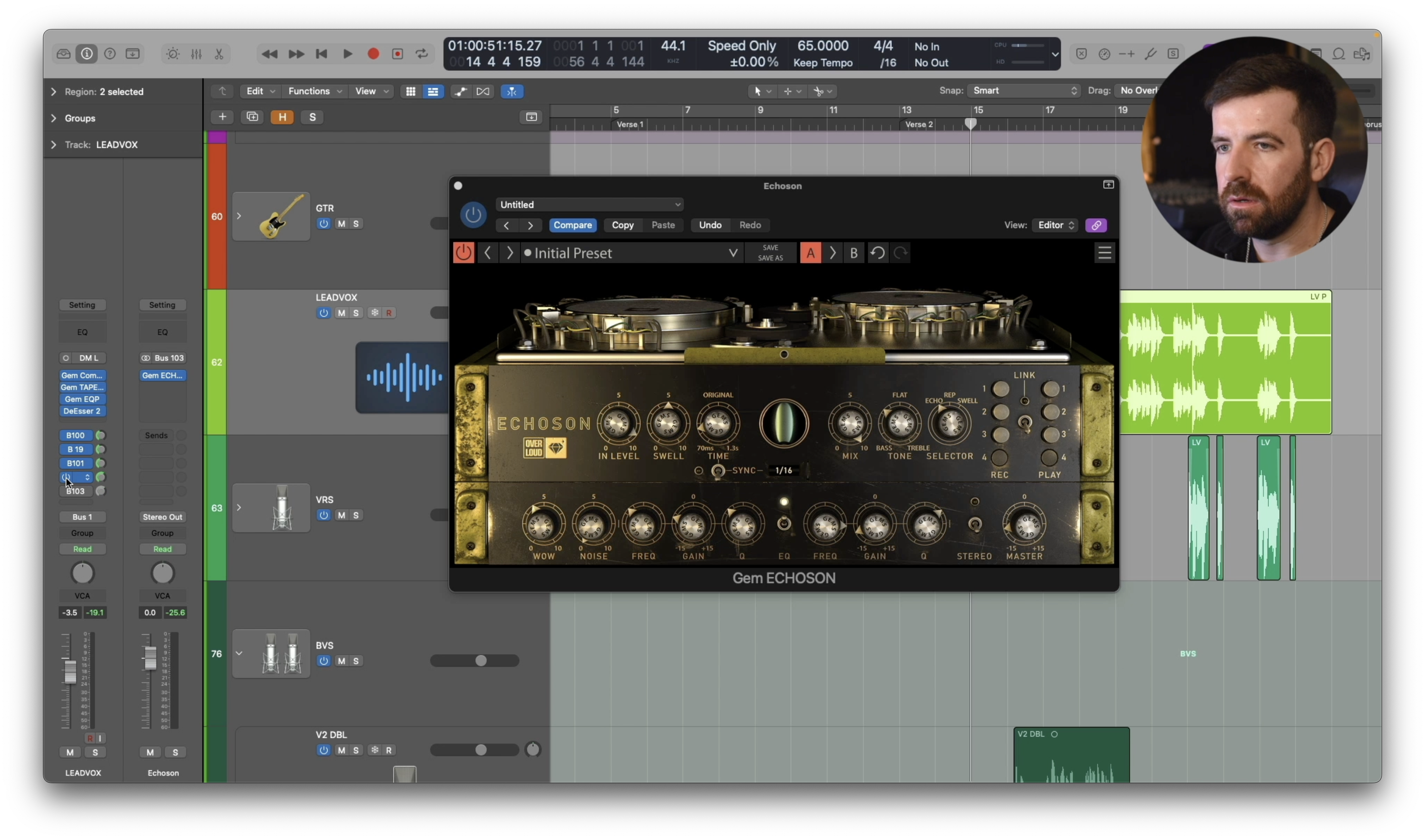
It’s important to choose the right kind of delay unit for this application. If the slapback is too bright, it’s going to accentuate the plosives and the sibilance within the vocal itself and ultimately create a sound which is busy and distracting. If the slapback is too low-end heavy then the mix will quickly sound muddy and cluttered.
My preference is for a super lo-fi slap delay which can be tweaked in a number of ways to sit perfectly behind the vocal, giving the mix a subtle energy and cohesion. This is where a plug-in like the Echoson from Overloud works wonders.
Modeled off the Binson Echorec - a 1960s analog echo unit - the Echoson plug-in features a whole range of possibilities for creating unique and interesting delay sounds. The simple tone and EQ controls make it incredibly versatile and super easy to shape the delay around the lead vocal from within the plugin.
Switching between the ‘Echo’, ‘Rep’ and ‘Swell’ modes also allows for a range of different delay styles, all of which add their own unique energy to the mix. If you wanted to go even further, the ‘Swell’ mode could also be used to create interesting ‘delay throws’ on certain moments within a track.
Final Thoughts
What I’ve described here is just one set of processes for creating width, dimension and energy within a vocal mix but these three particular plugins could be used in any number of creative ways. The principle point here is that we’ve got all bases covered - a clean but versatile delay for adding width, a characterful modulation plugin for adding depth and color, and finally a slap delay for adding energy and interest. Engage all three plugins together, along with a bit of reverb and see how the whole thing comes together to create a much more enhanced vocal sound!
Written by Guy Britton
Guy Britton is a seasoned music producer, mixer, and mastering engineer from the UK, with a focus on pop and indie genres. Guy has helped independent artists achieve breakthrough success, with his work being featured on radio and TV in the UK and Europe, as well as major Spotify editorial playlists. His expertise lies in delivering a unique and commercially appealing sound, with a passion for combining modern and retro elements to create deep, exciting tracks.

